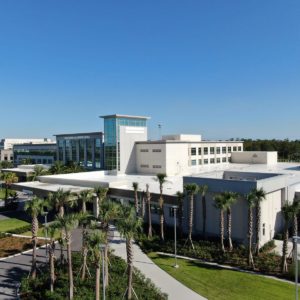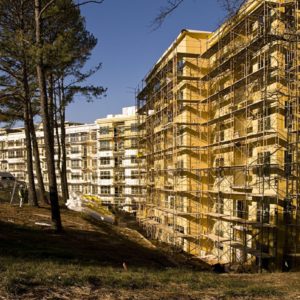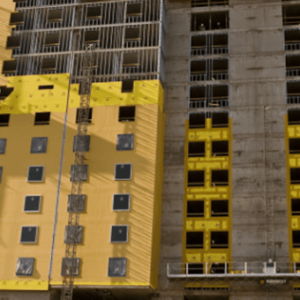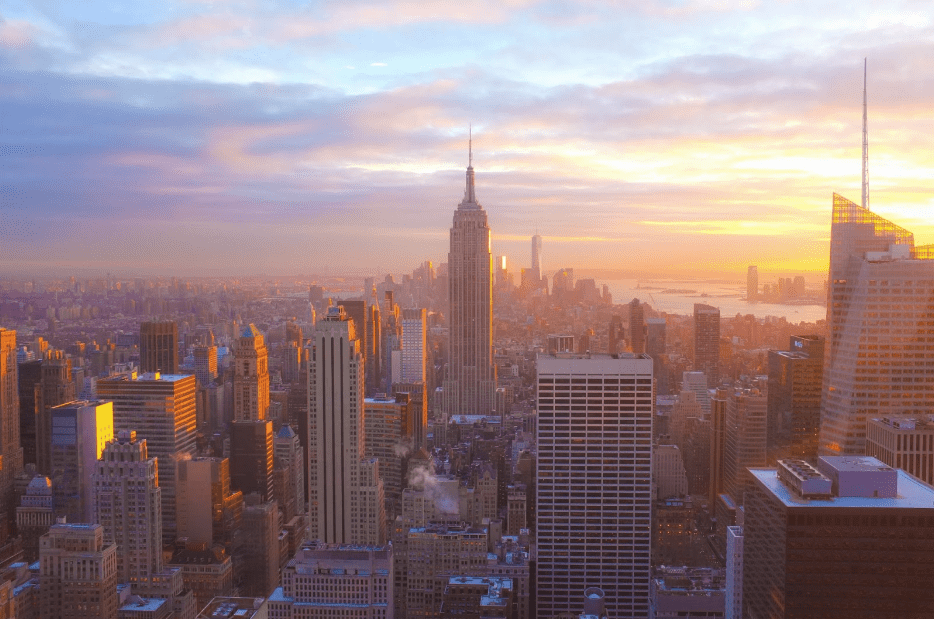
The Climate Mobilization Act – Local Law 97 (LL97) was passed by the New York City Council and went into effect on November 15, 2019 as part of New York City’s Green New Deal. This legislation sets limits on greenhouse gas (GHG) emissions for nearly 50,000 of New York City’s largest buildings. At the same time, the Department of Buildings created the Office of Building Energy and Emissions Performance (OBEEP) to oversee the implementation and compliance of the NYC Local Law 97.
Building Emission Limits
In December 2022, the NYC Department of Buildings (DOB) set building emissions limits (carbon ft2) based on property type, size, and compliance year. Beginning in 2024, the law assigns emissions limits that reflect the variation in energy use between 60 different property types from the ENERGY STAR Portfolio Manager. The limits take effect over four compliance periods, from 2024 to 2049, with stricter requirements as time goes by and allows for a gradual reduction in a building’s carbon emissions.
Why NYC Adopted Local Law 97
Buildings generate over two-thirds of New York’s greenhouse gas emissions. Reducing greenhouse emissions will improve air quality, benefit human health and prevent economic losses due to lower agricultural yields, reduced labor productivity, and decreased industrial output.
By focusing LL97 on the city’s most prominent buildings, the Climate Mobilization Act predicts the following outcomes in New York City by 2030:
- Reduction in New York City’s overall emissions by 10 percent
- Lessening of the city’s dependency on fossil fuels
- Saving building owners money by reducing energy bills
- Removal of 6 million tons of greenhouse gas emissions is equivalent to taking 1.3 million cars off the road yearly
- Creation of 26,700 green jobs
- Lessening of the community’s exposure to harmful air pollution that causes respiratory illnesses
- Preventing 50 to 130 premature deaths annually
- Eliminating 150 hospital visits annually
Which Buildings Must Comply with Local Law 97?
Local Law 97 aims to reduce emissions produced by New York City’s buildings by 40 percent by 2030, and 80 percent by 2050. Local Law 97 applies to the following covered buildings, with some exceptions:
- Buildings with more than 25,000 gross ft2
- Two or more buildings on the same tax lot that together surpass 50,000 ft2
- Two or more buildings governed by the same condo association board of managers and together exceed 50,000 ft2.
Buildings Exempt from NYC’s LL97
Local law exempts the following buildings from carbon emission limits:
- Industrial facility primarily used to generate electric power or steam
- Multi-family dwellings of 3 stories or lower, with no central HVAC or hot water system
- City buildings
- Non-profit hospitals and healthcare facilities
- New York Housing Authority’s housing developments or land
- Buildings classified as a group A-3 religious house of worship
- Rent regulated housing
- Real estate owned by a housing development fund company and organized by Article 11 of the private housing finance law and the business corporation law
- Properties that participate in a project-based federal housing program
Affordable Housing Pathways
LL97 mandates that covered buildings with rent-regulated and/or affordable units should follow one of three pathways. The pathway depends on several factors, primarily based on the percentage of units in the building subject to rent regulation and if the units participate in a federal project-based housing program:
1. Prescriptive Pathway (Article 321): The pathway for buildings with 35 percent or more rent-regulated units or one or more units participating in a federal project-based housing program.
The Prescriptive Pathway (Article 321) mandates that by 2024, the buildings must achieve emissions below the applicable 2030 limits or prove full implementation of relevant Prescriptive Energy Conservation Measures. In addition, building owners must file a one-time report by May 2025.
2. 2026 Compliance Pathway: The pathway for buildings with between one and 35 percent rent-regulated units.
The 2026 Compliance Pathway mandates that by 2026, buildings must meet emission limits or face penalties. In addition, building owners must file annual reports starting May 2027.
3. 2035 Compliance Pathway: The pathway for Mitchell-Lama buildings with no federal project-based housing program or rent-regulated units. The building can have one plus income-restricted units through certain loans, grants, and real property tax benefits.
The 2035 Compliance Pathway mandates that buildings must meet emission limits starting in 2035 or face penalties. Building owners must file annual reports beginning May 2036.
Impact of LL97
The cost to upgrade a building’s energy efficiency in compliance with LL97 may challenge some building owners. However, the law will improve energy management and provide many long-lasting advantages for businesses, properties, and tenants:
- Enhances tenant satisfaction and lessens turnover by improving comfort and keeping rents affordable
- Increases the marketability and value of properties by installing high-performance equipment
- Lowers the building’s carbon footprint and contributes to a healthier, cleaner community
- Improves the building’s bottom line by lessening operating expenses
When Does Compliance to LL97 Start?
Starting January 1, 2024, building owners for the 60 different covered building types must comply with the first round of carbon emission limits. Compliance with emission standards will change over time until it reaches zero in 2050.
In addition, beginning May 1, 2025, building owners must file an annual report with the Office of Building Energy and Emissions Performance (OBEEP) detailing their yearly greenhouse gas emissions. A Registered Design Professional, like a professional engineer or registered architect, must submit the report.
Penalties for Non-Compliance to LL97
Building owners not complying with emission limits and reporting can face civil penalties and fines:
- If a building exceeds its annual emission limit, the fine can amount to the difference between the building emissions limit and the LL97 emission limit, multiplied by $268.
- Not submitting your building’s annual emissions report can result in a civil penalty of $0.50 per gross ft2/month.
- Making a false statement can result in a Misdemeanor with a fine of up to $500K and prison for up to 30 days.
As with most extensive legislation, the NYC Department of Buildings has continued to clarify and define requirements to be in compliance with Local Law 97, including the newest packaging of rules from December 18, 2023.
Timeline and Targets For LL97
Carbon emissions caps will become stricter over a series of compliance periods: 2024-2029, 2030-2034, 2035-2039, 2040-2049, and 2050 – outward.
December 31, 2024: The Prescriptive Pathway for regulated and affordable units mandates that building owners take specific energy conservation measures like upgrading lighting, weatherization, and air sealing or demonstrate compliance with 2030 emissions limits.
January 2024: Limited annual emissions for covered buildings for 2024 to 2029 begins. However, types of affordable housing and buildings (under the law’s Article 321 prescriptive path) have altered or delayed requirements.
May 1, 2025: Building owners must submit their first detailed, compliance buildings emission report.
June 2025: City-owned buildings must achieve an emissions reduction target of 40 percent below fiscal year 2006.
January 1, 2026: OBEEP must submit the first annual compliance report on covered buildings to the mayor. Buildings with at least one, but no more than 35 percent rent-regulated units must begin complying with carbon emission limits.
January 2030: Covered buildings must comply with new stricter emissions limits for calendar years 2030 – 2034. Also, after 2030, a building must lower its carbon associated with electricity use. In addition, the NYCHA must reduce greenhouse gas emissions by 40 percent below 2005 levels.
June 2030: City-owned buildings must achieve an emissions reduction target of 50 percent below fiscal year 2006.
January 2035: Three significant mandates begin in 2035:
- Covered buildings must comply with new stricter emissions limits for calendar years 2035 – 2039.
- A building must lower its carbon associated with electricity use in line with projected renewable energy deployment in NYS after 2035.
- Income-restricted housing, like Mitchell Lama rentals, must begin complying with carbon emissions limits.
January 2050: All covered buildings must show compliance with an emission factor of 0.00. In addition, NYCHA must attempt to lower greenhouse gas emissions 80 percent below 2005 levels.
How To Prepare for Local Law 97
Ensuring that your building will meet carbon emission limits in 2024 requires evaluating your building’s status, improving its energy efficiency by applying new sustainable technologies, and educating yourself on carbon emissions.
Determine Your Building Current Energy Usage and Carbon Emissions
Determining your building’s current emissions compared to the 2024 carbon emission limits will help identify areas of improvement and prepare for meeting LL97 targets.
Building owners can measure and track greenhouse emissions as well as energy and water consumption using the ENERGY STAR Portfolio Manager® online tool, with just your energy bills and basic information about your building.
A design professional (energy auditor) can help evaluate your building’s energy consumption, suggest ways to improve its energy efficiency, and navigate the complex reporting requirements of Local Law 97.
Begin Reducing Your Building Energy Use
Lessening your building’s energy use within can help prepare for LL97:
Install Sensors
Installing sensors can optimize a room’s lights based on occupancy and more efficiently control building comfort by enabling improved HVAC zone controls.
Replace Windows and Doors
Installing ENERGY STAR-storm skylights, windows, and doors can lessen heat loss by 25 to 50 percent. In addition, automatically darkening windows can control glare and brightness from direct sunlight. Shades and louvers can block out the summer’s heat, but can let the warmth in during the cold months.
Energy-Efficient Lighting
Lighting contributes up to ten percent of a building’s annual electricity costs. Installing controls like dimmers, timers, or photocells that turn unused lights off and energy-efficient lighting, like halogen incandescent, light-emitting diodes (LEDs), and compact fluorescent lamps (CFLs) will lessen energy use.
High-Efficiency Ventilation Systems and HVAC
A building’s heating and cooling system accounts for 34 percent of the structure’s energy use; therefore, consider replacing an old, inefficient HVAC system with a properly installed high-efficiency heating and cooling system. In addition, an energy recovery ventilation system can also manage ventilation and lower energy loss by transferring energy from outgoing conditioned, polluted air to fresh incoming air.
Upgrade the Building Envelope
Upgrading the building envelope to include continuous insulation, an air and water-resistive barrier, and a durable, protective facade will create an energy-efficient, code-compliant, durable, and attractive commercial building that can contribute significantly towards achieving LL97 carbon emission limits.
Sto Corp. offers a variety of energy-efficient, code-compliant building envelope solutions that include continuous insulation and air and water-resistive barriers applicable for renovation projects and new construction.
Contact Sto Corp building envelope experts today to improve your building’s energy efficacy and work towards LL97 compliance.
Georgia King Village
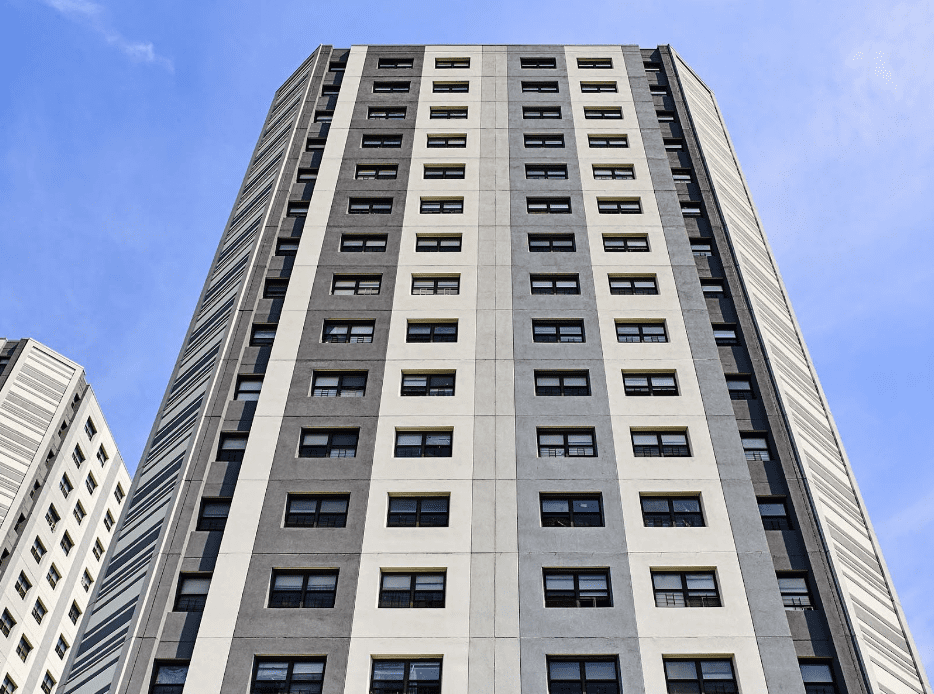
Sto Products: StoTherm® ci Essence
Applicator: AA Construction
Architect: L+M Development
Distributor: Sto of New Jersey
L+M Development chose StoTherm® ci Essence to upgrade the nearly 50-year-old Georgia King Village affordable housing’s building envelope. Utilizing Sto Products helped to create a more efficient, comfortable, and attractive structure with improved structural integrity.
75th Street, New York City’s Upper West Side
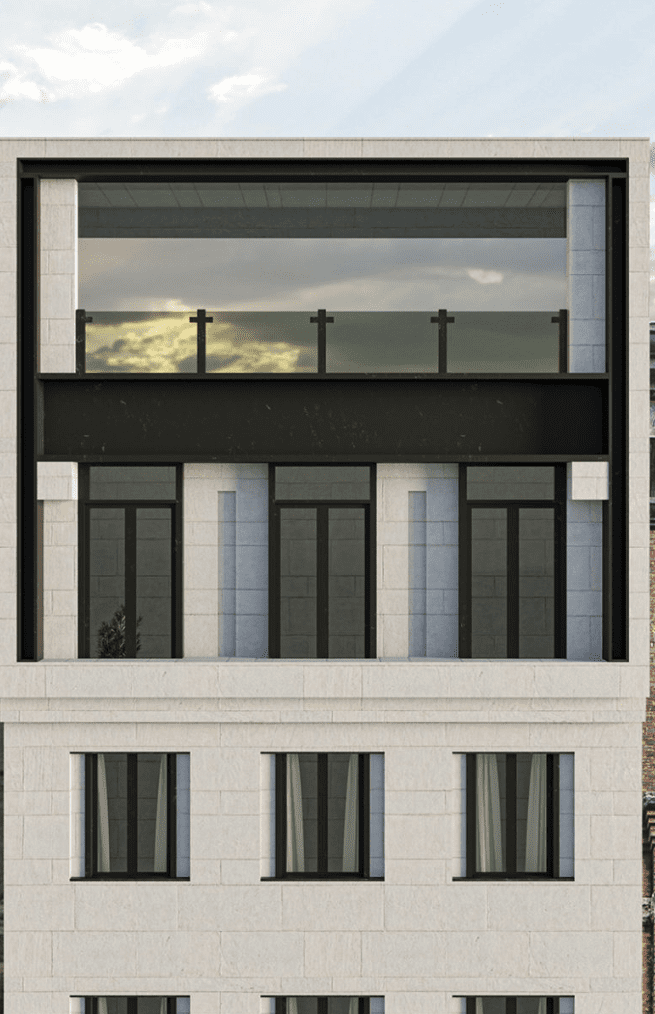
Sto Products: StoTherm ci with Stolit® Milano
Applicator: ProLine Finishes
Architect: Jeffrey Cole Architects
General Contractor: Source Construction Management, LLC
Entire sections of the original elegant porcelain tile facade of this seven-story, seven-unit residential building began falling off due to improper installation and water infiltration, requiring a Level 4 Remove and Reclad. The architects and contractor chose to replace the crumbling porcelain with StoTherm® ci system using Stolit® Milano porcelain finish. The Sto solution created an ultra-smooth, porcelain tile finish, mimicking grout lines with precisely drawn trowel marks.
333 Grand St
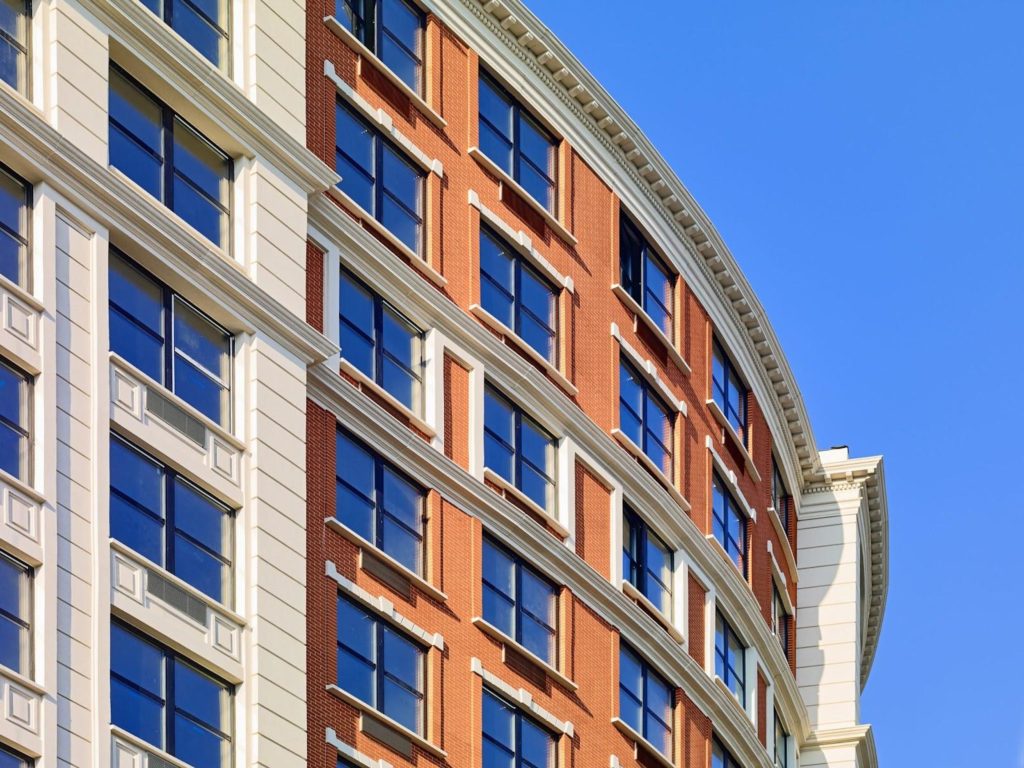
Sto Products: StoTherm® ci with StoSignature™ Stone & StoSignature™
Brick Applicator: Simpson Plastering
Distributor: Sto of NJ
Architect: Urban Architecture
Owner: Liberty Harbor
New Jersey developer chose to replace the original cladding of the 333 Grand, 18-story apartment building with StoTherm® ci wall system with StoSignature Stone and StoSignature Brick to improve the building envelope’s energy-efficiency and resilience while minimizing its carbon footprint and achieving higher LEED certification results. In addition, Sto products allowed for multiple cladding types and shapes, preserving the building’s unique aesthetics.
Lido Beach Towers, Long Island, NY U.S.A.
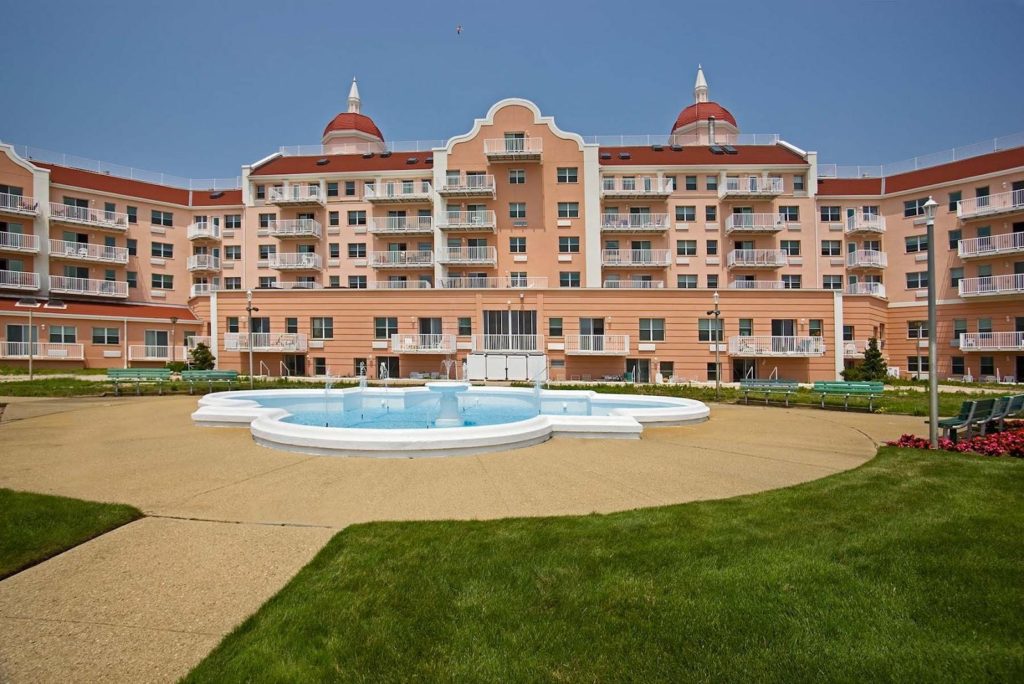
Sto Products: StoThermTM Premier NExT®
StoGuard Engineer: P.E. Consulting Engineers
Contractor: Flag Waterproofing & Restoration
Rehabilitation of the 100-year-old Lido Beach Towers condominium highlights the benefits of StoTherm® ci as a renovation method for degrading buildings. The aesthetically pleasing second-skin approach of EIFS significantly enhanced the building’s energy efficacy, health, and sustainability.
Ocean Village
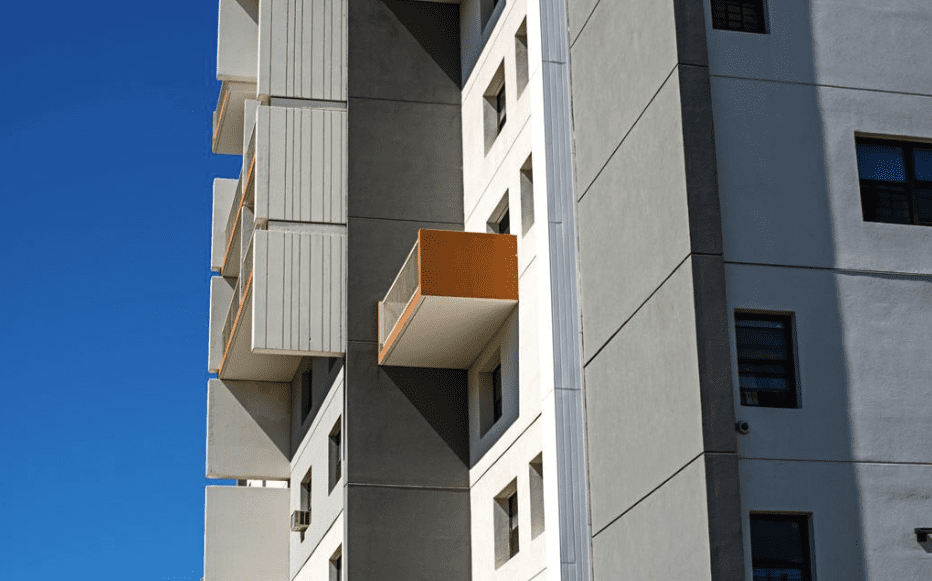
General Contractor: L+M Development
Applicator: Acies Group, LLC, M&A Projects Inc., AA Construction
Architect: OCV Architects
Distributor: Sto Eastern
Sto Corp. products revived the former Ocean Village (now the Arverne View), a low-income complex in NY, by enhancing its energy efficiency, durability, and curb appeal:
Sto Products:
- StoTherm® ci Lotusan®: Exterior continuous insulation wall system
- StoLit® Lotusan®: Tintable ultra-hydrophobic textured wall finish with superior self-cleaning properties
- StoGuard®: Fluid applied air and water-resistive barrier
- StoColor® Acryl Plus and StoColor® Silcolastic (on its balcony)
Sto Corp Products for Enhancing Energy Efficiency and Resilience
StoTherm® EIFS cladding systems integrate continuous insulation (CI), air and water-resistant barriers, and numerous textured finishes to create high-performance, sustainable wall cladding. The durable and unique systems maximize curb appeal and save money through lower energy bills. Impressively, architects and contractors and architects have used our products worldwide for decades for new construction and renovations.
StoTherm®ci GPS
Durable, high-performance, energy-efficient StoTherm ci GPS EIFS wall system provides up to R56 continuous exterior insulation. It incorporates a StoGuard Air and Water-resistive Barrier (AWRB), and high-performance Sto finishes in a fully tested wall cladding system.
StoTherm ci MVES
StoTherm ci MVES (masonry veneer engineered system) in natural stone, ceramic tile, or manufactured stone meets applicable building code requirements. It incorporates air and water-resistant barrier and continuous exterior insulation with Sto’s high-strength masonry veneer adhesive.
StoTherm® ci
StoTherm® ci Wall Systems combine continuous insulation, moisture, drainage, and air barrier to ensure an energy-efficient and durable wall system to save money on repairs, utilities, and maintenance. In addition, sustainable StoTherm® ci Wall Systems enhance indoor comfort and air quality. StoTherm® offers various textured finish options to meet your aesthetic and architectural needs.
StoTherm® ci Mineral
The StoTherm® ci Mineral EIFS System includes a non-combustible, mineral wool exterior CI and continuous air and water-resistant barrier with Sto’s high-quality finishes to create an advanced cladding assembly.
StoTherm® ci XPS
Durable and high-performing StoTherm® ci XPS includes high R-value extruded polystyrene insulation into the wall system and Guard® fluid-applied water and air-resistant barrier to create water and airtight air walls, ensuring thermal efficiency and durability.
Financial Incentives for LL97 Compliance
To help commercial building owners comply with LL97 and reduce carbon emissions, New York City established programs and services through NYSERDA and local utilities:
- The New York State Affordable Multifamily Energy Efficiency Program (a combined effort of the New York State Energy Research and Development Authority and Joint Utilities of New York) offers incentives for installing energy-efficient equipment and technology in affordable multifamily buildings with five or more units.
- The Multifamily Buildings Low-Carbon Pathways offer incentives ranging from $700-$5,000 per installation of low-carbon upgrades.
- The NY-SUN program will help New Yorkers access solar energy and lower their energy costs with incentives per watt through approved NY-SUN contractors.
- The NYC Accelerator PACE Program offers financing options for owners of multifamily buildings with three or more units.
- The Clean Heating Fuel Credit gives cooperatives and condominiums credits, or cash rebates
- The Con Edison Multifamily Energy Efficiency Program offers financial incentives for approved equipment upgrades for residential multifamily buildings with five or more units.
- The NYS Affordable Multifamily Energy Efficiency Program provides energy-efficient incentives of up to $2,000 per dwelling unit, if qualified.
New York City’s Local Law 97
Reducing greenhouse gas emissions through compliance with LL97 will create a more sustainable, productive, and healthier environment for future generations. In addition, lower emissions can increase a building’s resale value, reduce operating costs, and contribute to longer tenant retention.
The first round of carbon emission limits for qualified covered buildings starts in 2024, with compliance periods lasting through 2050. For free assistance on complying with LL97 on time, to avoid fines, and help with energy efficiency and renewable energy upgrades, contact NYC Accelerator.
